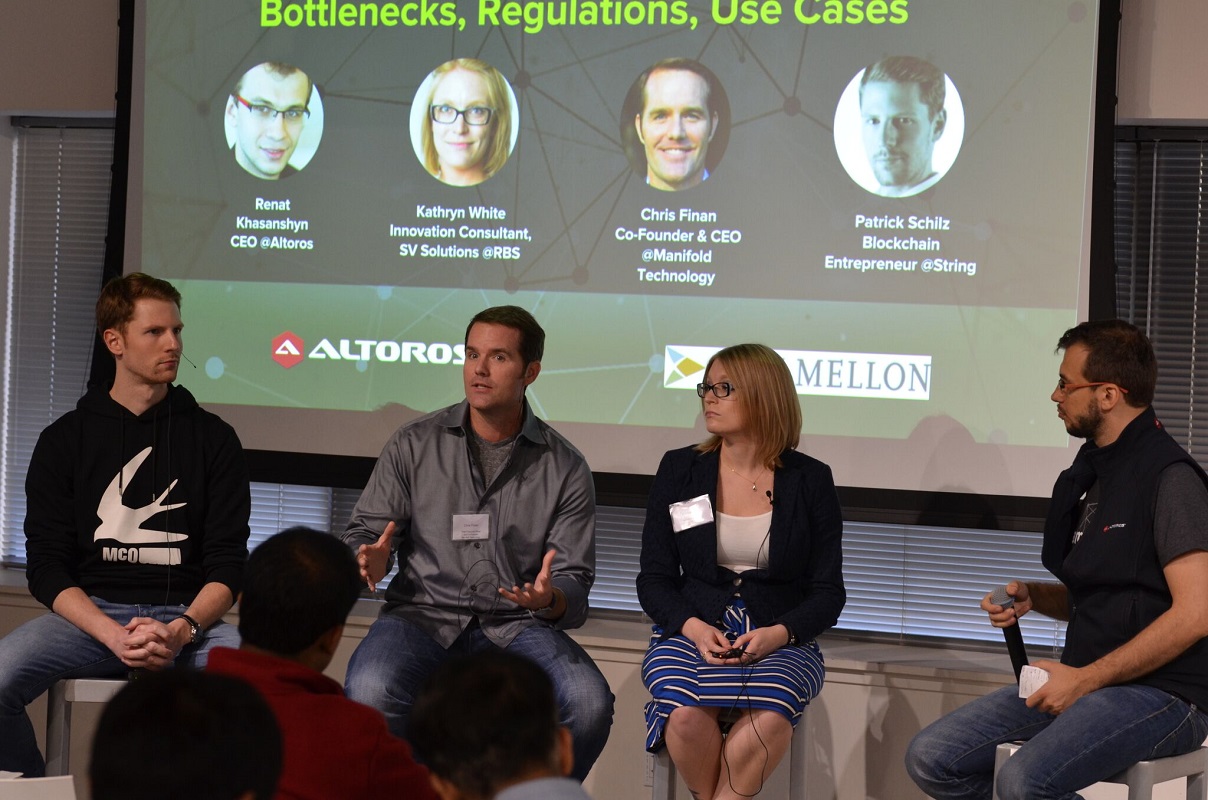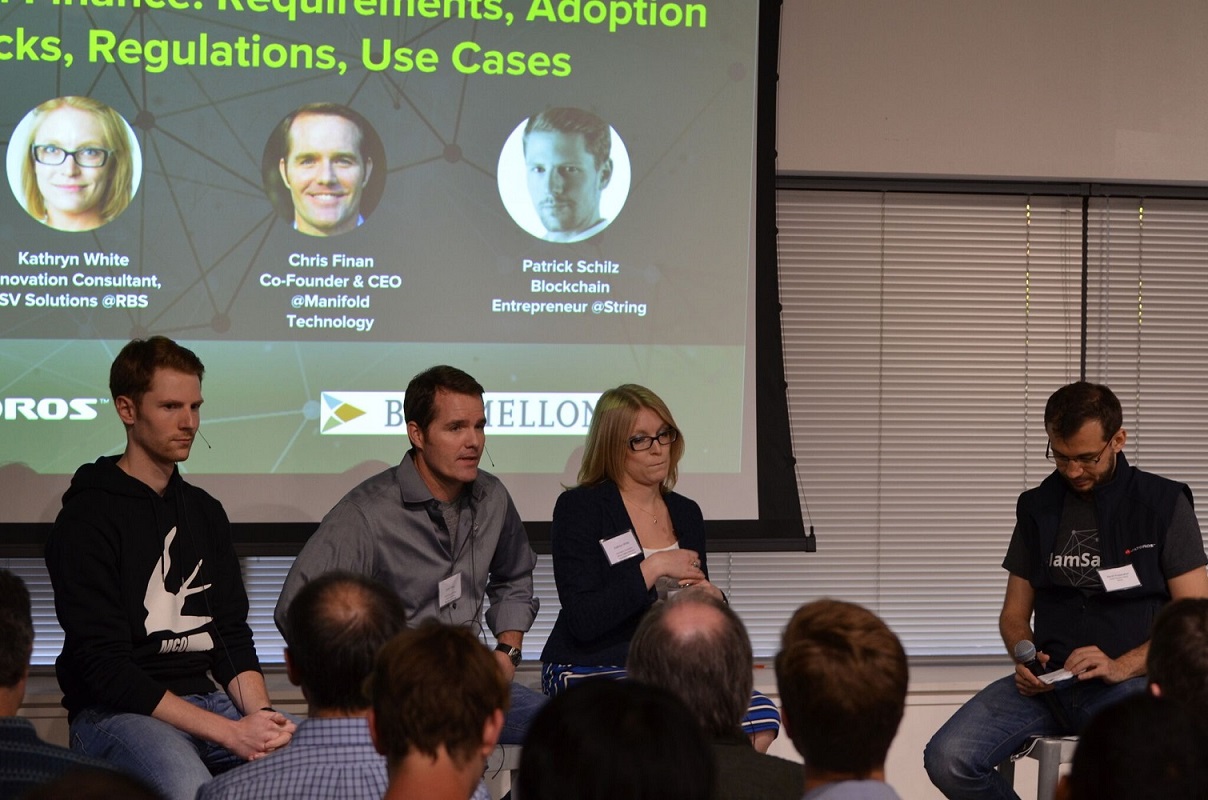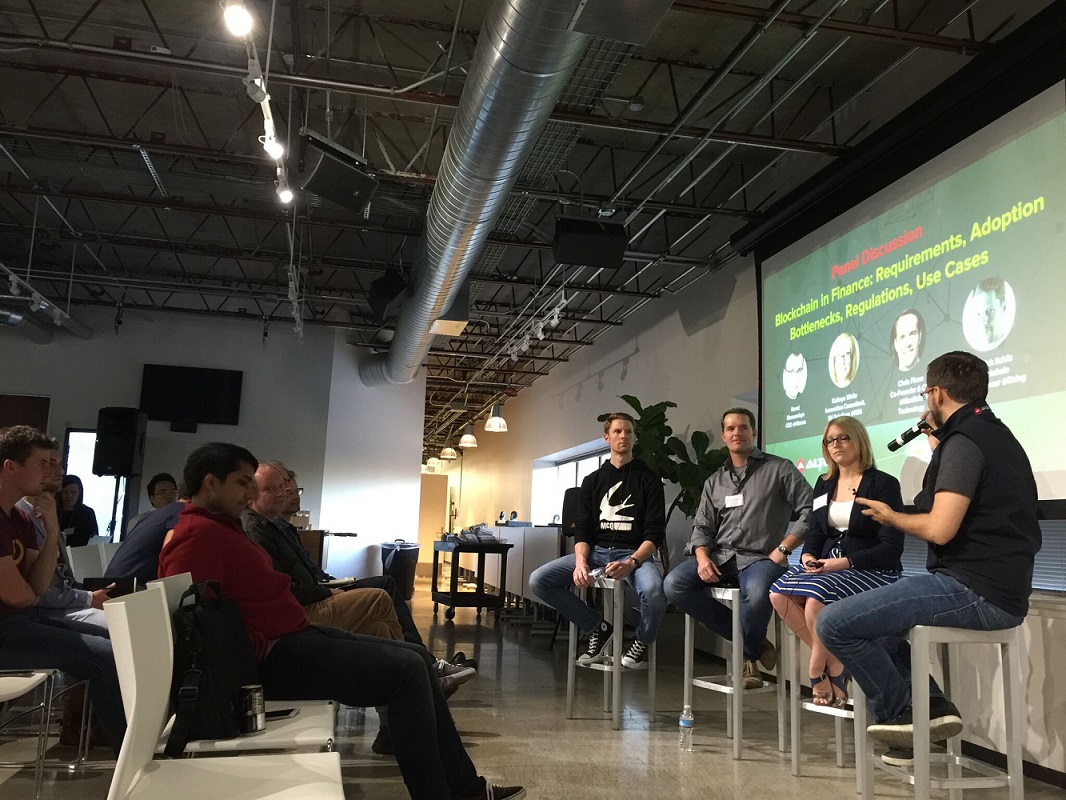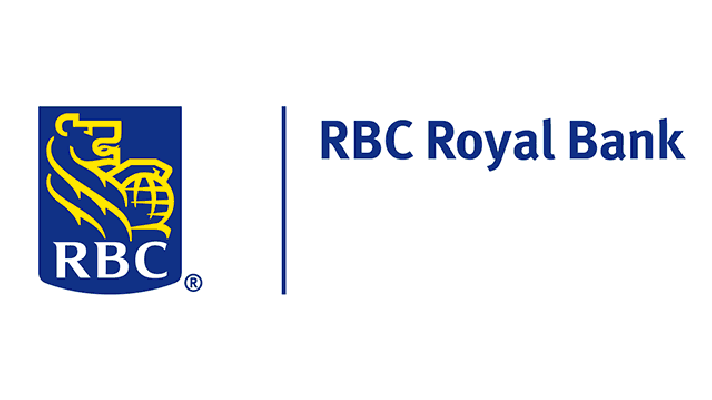When Will Blockchain Be Massively Adopted and How to Boost the Process?
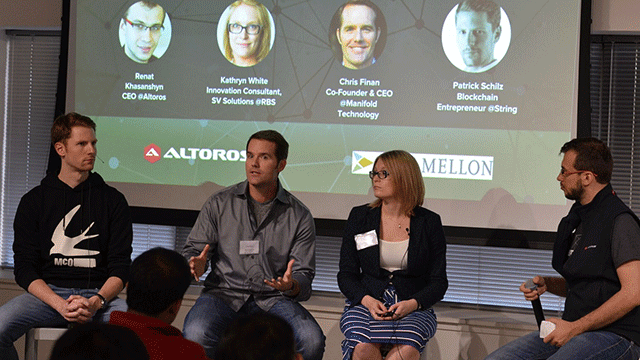
Impatience: how much waiting?
Blockchain may transform the financial services industry, but not just yet.
That was the primary point of view expressed by panelists at a recent “Blockchain in Finance” meetup in Silicon Valley, which was hosted by Renat Khasanshyn, CEO at Altoros.
Kathryn White, a San Francisco-based Innovation Consultant with the Royal Bank of Scotland (RBS), noted that “it’s so early” in the blockchain era, yet there’s already an impatience to get things moving more quickly. “So many people have gone from not knowing what blockchain is to (demanding) ‘what can it do?’” she noted.
Patrick Schilz, Blockchain Entrepreneur at String—the autonomous finance startup company, seconded that notion, saying “people demanding requirements about what can we make of (blockchain) must remember it’s still very early.” In any case, he said, “blockchain is (often) still in an experimental stage.”
Chris Finan, Co-Founder and CEO of the blockchain-focused Manifold Technology, said he believed we’re “five to 10 years out for mass (blockchain) adoption.”
Involving a larger group in adoption
Renat asked the panelists whether “small successes” should be the focus today, so that early adopters can validate their faith in blockchain with company management. The panelists agreed this should be the focus, while also noting the difficulty in doing things on a larger, collaborative scale.
Patrick noted the odd dynamic of how a first-mover advantage needs to be a collaborative one with blockchain.
“You need a business unit that’s ready to go fully engaged,” Chris said. “And you have to be able to speak in the language of the bank.” He also noted the “n-squared problem of the network effect” in trying to work with “massive consortia” instead of a single institution.
Proving out small use cases
For Kathryn, “understanding use cases is the key, so the next step is to start with a very simple one and prove it out.”
Meanwhile, Chris also said Manifold is grabbing “some low-hanging fruit” by working with RBS to improve its rewards program through instantaneous account synchronization across the settlement process. “This is something that regulators don’t worry about and something that won’t disrupt the bank’s existing IT infrastructures,” he said.
“Understanding use cases is the key.” —Kathryn White, RBS
“It may be counterproductive to seek use cases for blockchain outside basic financial services at this point,” Kathryn noted. “There needs to be consistency with multiple parties and an agreement across them. It’s not necessary to do things exactly the same way, as long as they can play together.” She said she thinks there will be other opportunities within RBS in the area of customer service.
Learn in practice
Chris warned attendees to “understand the difference between theory and practice” and to beware of “the blockchain-industrial complex,” echoing President Eisenhower’s original invocation of the military-industrial complex. By this, he means that blockchain developers can sometimes be creating a solution in search of a problem.
“Beware the blockchain-industrial complex.” —Chris Finan, Manifold Technology
You can also read our recent story for the lessons learned by RBS when building a digital wallet based on blockchain/Hyperledger.
Compete vs. cooperate
Patrick’s mention of the first-mover advantage was profound. It seems that with blockchain, if your competitor is using it, you need to figure out how to cooperate rather than compete.
In this context, though, Chris mentions the problem of getting a large group all moving in the right direction. Over the long haul, this must happen. Single-company blockchain use cases, such as the one mentioned above, are great for customer-facing ideas. For back-end settlement in financial services, though, a single-company blockchain makes the sound of one hand clapping.
Kathryn pointed out that separate blockchains don’t need to be identical. This mirrors what’s going on in the overall world of blockchain: there are separate, intense blockchain-creation efforts by Ripple, R3, and Ethereum, as well as the very open approach of the Hyperledger project, which may end up being the OpenStack of blockchains.
Want details? Watch the video!
Table of contents
|
Further reading
- The Royal Bank of Scotland Builds a Hyperledger Digital Wallet: the Lessons Learned
- Blockchain Adoption: Industry Requirements and the Role of Prototypes
- What Is the Future of Blockchain?
- Opinion: The Impact Blockchain Can Bring upon Finance and Banking and How It May Happen
- Blockchain Bottlenecks in Finance, Healthcare, and Insurance
About the experts



